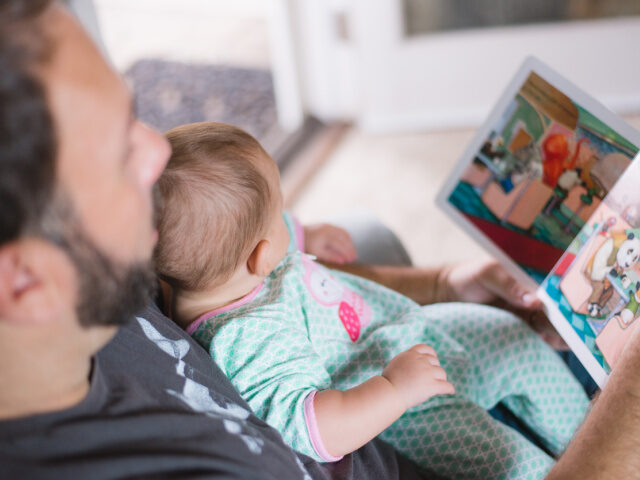The share of fathers taking up the role of stay-at-home dads has increased by several points since the late 1980s, data analysis by Pew Research Center shows.
Pew Research Center senior researcher Richard Fry found that between 1989 and 2021, the share of fathers who were not working increased from four percent to seven percent, ultimately coinciding with an increase in stay-at-home dads within that same period. Fry conducted his analysis using the Annual Social and Economic Supplement (ASEC) of the Current Population Survey (CPS), a poll administered by the U.S. Census Bureau and the Bureau of Labor Statistics.
“Due to these diverging trends, dads now represent 18 percent of stay-at-home parents, up from 11 percent in 1989,” Fry wrote.
At the same time, the share of mothers who were not working for pay decreased slightly, from 28 percent to 26 percent:
Over the past 30 years more dads are staying home and not working for pay. Today 18% of stay-at-home parents are dads, up from 11% in 1989. https://t.co/s6UYbUQpe1 pic.twitter.com/2DctqM4TTa
— Richard Fry (@r_fry1) August 3, 2023
The reasons stay-at-home moms and stay-at-home fathers give for not working “differ significantly,” he wrote.
“In 2021, the vast majority of stay-at-home moms (79 percent) said they took care of the home or family. About one-in-ten (9 percent) said they were at home because they were ill or disabled, and smaller shares said they didn’t work because they were students, unable to find work or retired,” the report reads. “Stay-at-home dads cite more varied reasons for not working for pay. In 2021, 23 percent stayed home to care for the home or family. That is up from only 4 percent in 1989 but still well below the share of stay-at-home moms who said the same.”
More than one-third of stay-at-home dads (34 percent) said they were not working because of disability or illness, down from 56 percent in 1989. Thirteen percent said they were retired, 13 percent could not find work, and 8 percent were going to school:
There are a variety of reasons dads give for staying home and not working for pay. In 2021 23% indicated it was to take care of family/home. 4% of stay-at-home dads gave this reason in 1989. https://t.co/s6UYbUQpe1 pic.twitter.com/FyTrQpDAWY
— Richard Fry (@r_fry1) August 3, 2023
There are several statistical markers that differ between dads who stay at home and those who work for pay outside the home.
Stay-at-home dads are less likely than dads working for pay to have completed at least a bachelor’s degree. Twenty-two percent of stay-at-home dads have at least a bachelor’s degree, compared to 42 percent of dads who work for pay, Fry found.
Families of stay-at-home dads also tend to be “less economically well-off” than families of fathers who work for pay, according to the report.
“Some 40 percent of stay-at-home dads live in poverty, compared with 5 percent of dads who work for pay,” Fry wrote:
Dads who are employed for pay tend to have different characteristics than stay-at-home dads. About 42% of dads working for pay have completed at least a bachelor's degree compared to 22% of stay-at-home dads. https://t.co/s6UYbUQpe1 pic.twitter.com/vStRbbGDr3
— Richard Fry (@r_fry1) August 3, 2023
Additionally, stay-at-home dads trend older than dads who work for pay, with 46 percent of stay-at-home dads over the age of 45 compared to 35 percent who work for pay.
By race and ethnicity, Fry found that half of dads who don’t work for pay are white, as are 60 percent who work for pay. Black fathers are “a larger share of stay-at-home dads (18 percent) than they are of working dads (9 percent).” Hispanic dads are 21 percent both working and stay-at-home dads, and Asian fathers are 8 percent working fathers and 7 percent stay-at-home dads.
Fathers who work for pay are more likely to be married (85 percent) than those who stay at home (68 percent), according to the report. Seventy-three percent of stay-at-home dads who do so to care for family are married, as are 66 percent who are home for other reasons.

COMMENTS
Please let us know if you're having issues with commenting.